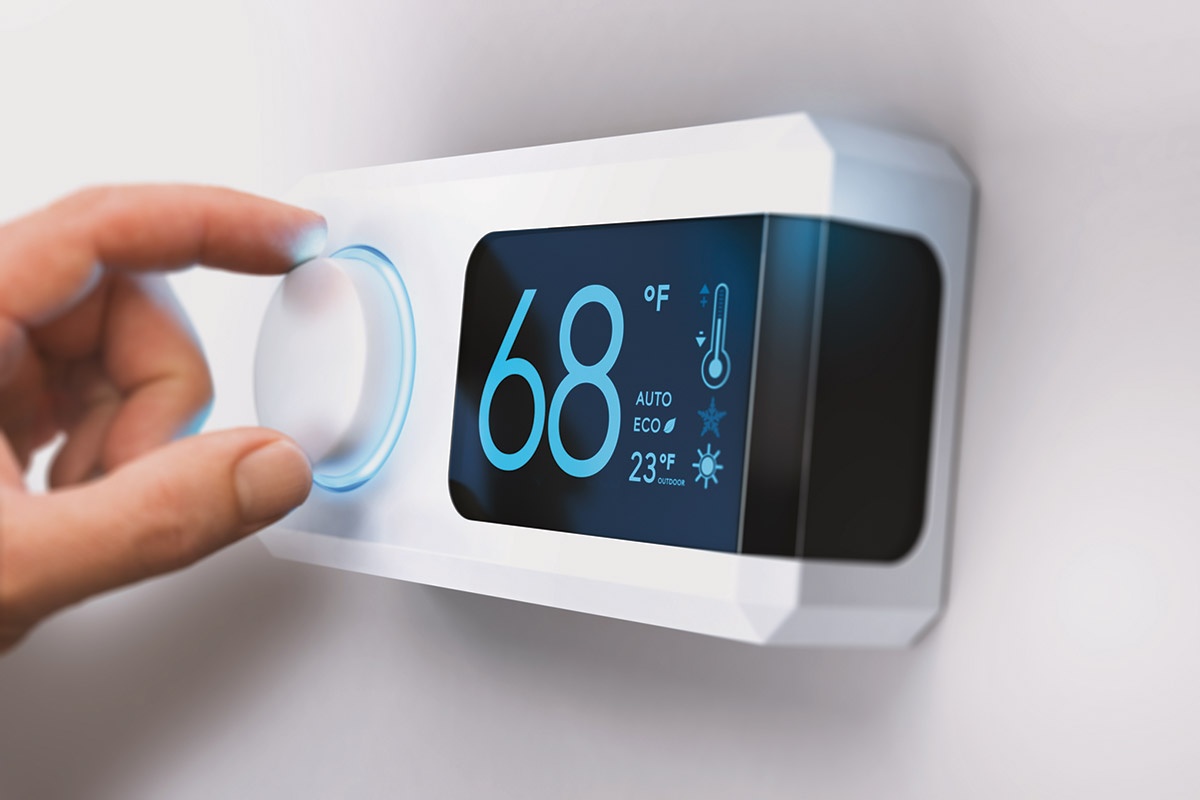There is no single component that contributes more to increased electric bills than heating in the winter. It accounts for 25% to 30% of a home’s annual energy costs and takes place over a three- to four-month period. Weather, inefficiency and home habits determine how big your bill will get. Below are some tips for fighting those factors.
Weather
Keeping your home within a fairly consistent internal temperature range (65–75 degrees) means your heating system has to work harder when the temperature gap between the exterior and interior of your home increases.
If you have your home’s thermostat set at 70 degrees and the temperature outside is 50, for example, your system must only adjust for a 20-degree variance. However, when the temperature drops to 30 degrees outside, your system now must compensate for a 40-degree difference.
You can’t control the weather, but you can control your home’s thermostat setting. The smaller the gap between that setting and the outdoor temperature, the less electricity your heating system will use—and the less you will pay.
Inefficiency
Wasted energy due to a home’s inefficiency can contribute to an electric bill being higher than expected. Combined with a very cold winter, inefficiency is a double whammy for winter electric bills.
The older your home is, the more likely it is to have air leaks and insufficient insulation. Seal up cracks and gaps, and make sure the attic has sufficient insulation.
An older or poorly maintained heating, ventilating and air conditioning system will also elevate energy use. Be sure to perform regular maintenance, including frequently changing filters. And if your system is more than 10 years old, it is probably worth exploring the potential return on your investment in energy savings if you replace the system with a more efficient one.
Like HVAC systems, older appliances are less efficient and more costly to operate, so consider whether it’s time to upgrade. Also, if you keep an extra refrigerator in the garage or elsewhere, consider pulling the plug. Secondary refrigerators are typically older and way less efficient, making the cost of keeping a few beverages cool pretty high.
Home Habits
It may be hard to accept, but higher bills are often due to our own habits. If your thermostat is set to 75 degrees in the winter, consider layering clothing and lowering the setting to achieve comparable comfort. And make sure you lower the thermostat even further at night, when you’re snuggled up under the covers, or during the day, when everyone is away from home.
You should also pay attention to the temperature setting on your water heater (120 degrees is optimal for efficiency); your refrigerator should be set to 34–37 degrees and the freezer between zero and 5 degrees. If any of these appliances has been hanging around for more than 10 years, you also should consider replacing them.
Simple things like washing clothes in cold water and only doing full loads will increase efficiency. Full loads for the dishwasher should also be the norm. Turn off lights when you leave a room, and switch out less efficient bulbs for long-lasting, high-efficiency LED bulbs.
Making the adjustments you have control over can go a long way to keeping this winter’s electric bills within your budget.


